Brisco Falls is a jaw-dropping Columbia Valley waterfall located just off of Highway 95 near Brisco. Like many waterfalls not found in a National Park , the way to Brisco Falls is unsigned and directions online aren’t always clear. Though the route is very short, there are a couple of small obstacles along the way including a small wooden platform of dubious safety, and a steep riverbank or log crossing to approach the falls. Anyone with a capable sense of balance won’t find any difficulty however, and the obstacles will likely only add to the sense of adventure for many.
Brisco Falls is one of those challenging waterfalls to photograph due to the constant barrage of spray bursting from where the powerful Templeton River crashes down against the rocks. I was soaking wet from standing near the waterfall, and my camera enjoys getting wet presumably a lot less than I do. Still, it was a fantastic experience approaching the base of the waterfall and feeling its power, and one I definitely recommend for others.
Continue reading this blog post for everything you need to know to experience Brisco Falls in the Columbia Valley for yourself, including distance, elevation gain, how to get there, the best time to visit, and lots of photos of my experience.
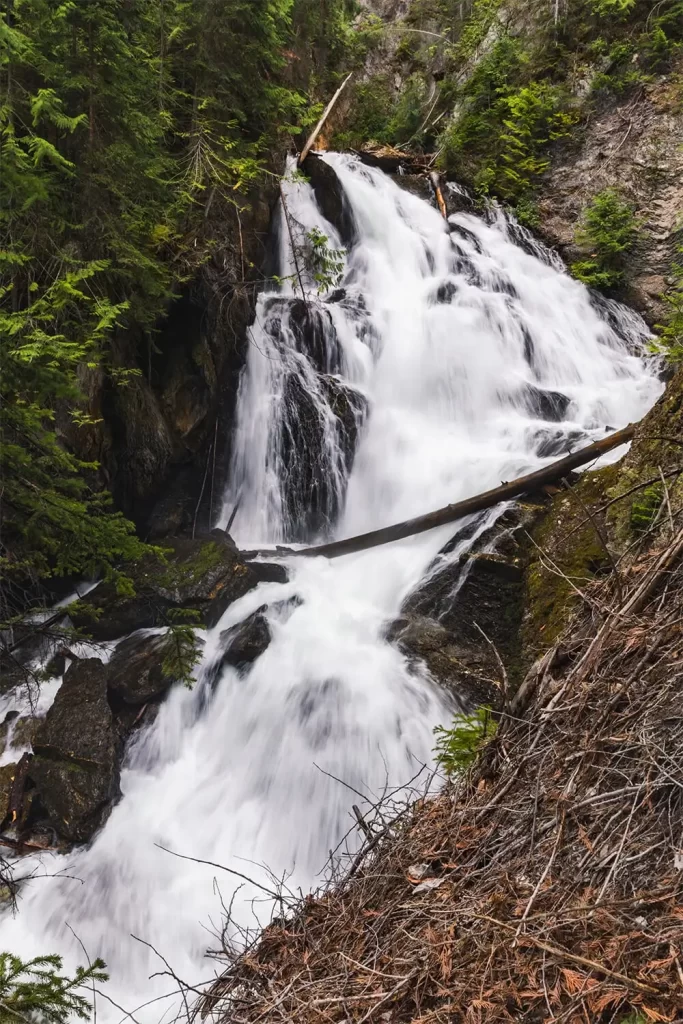
When hiking it’s important to avoid harmful practices such as disturbing plants or rock-stacking, or removing any natural object from flowers to rocks, as it’s important to leave the environment as natural as possible for the animals and for fellow hikers to enjoy in perpetuity. As many flowers as there are, there are few enough that if we all took one, then there wouldn’t be any left. Take only photos, leave only footprints.
If you haven’t heard of Leave No Trace principles, they’re also really essential to read up on before heading anywhere into the outdoors in general. Following these important principles basically means doing your best to leave beautiful places like Brisco Falls as good (if not better) than you found them, both for their preservation and for the enjoyment of other visitors.
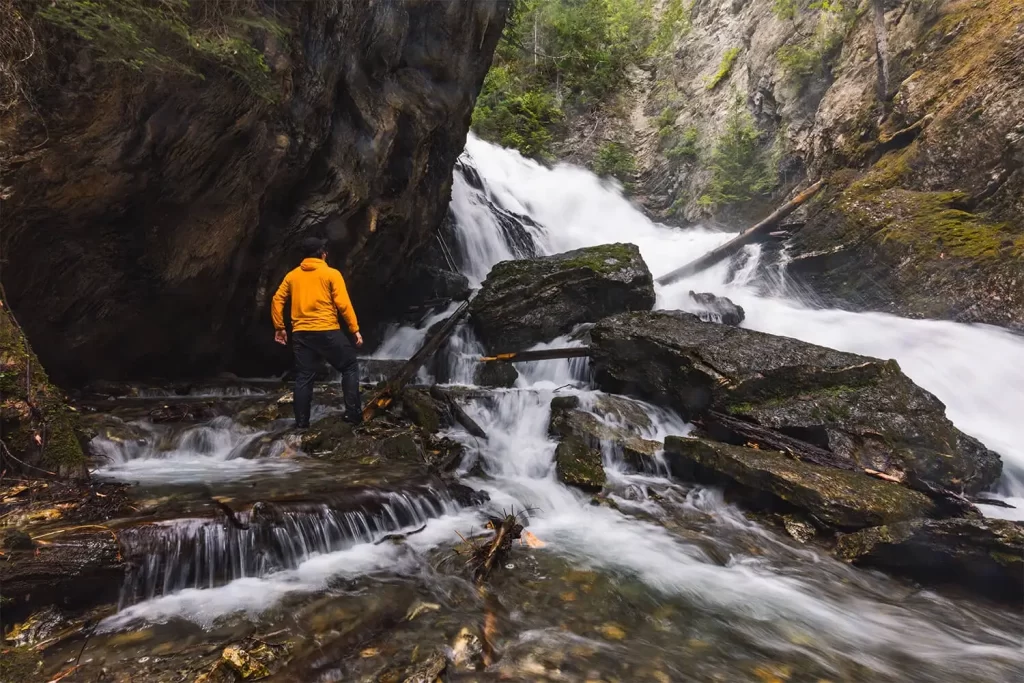
When to Visit Brisco Falls
The Templeton River upon which Brisco Falls can be found is fed by two small glaciers, so water flow can be expected to be high well into summer, unlike some other nearby waterfalls which might start to dry up during warmer parts of the year. It’s safe to say that there is no bad time of year to visit Brisco Falls.
How to Get to Brisco Falls
Brisco Falls is located one hour south of Golden, or two hours north of Cranbrook. Upon reaching the small community of Brisco, turn west onto Brisco Road. The road quickly turns to the right to go around Brisco Wood Preservers. Continue along Brisco Road for 5 km, and park on the side of the road just after crossing Klikwallie Bridge. Optionally, continue several km further to visit Lower Bugaboo Falls, another spectacular waterfall in the area I absolutely recommend stopping at.
Click here to open the exact trailhead location in Google Maps.
Walking to Brisco Falls
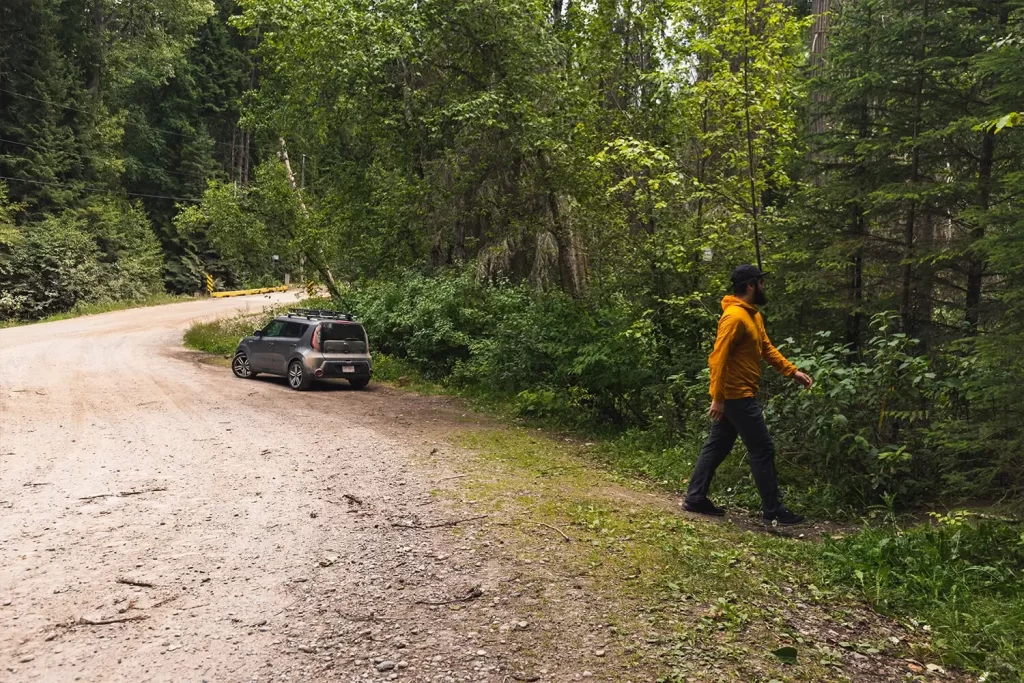
Parking is alongside the road just past Klikwallie Bridge. The start of the trail is unmarked but is not too difficult to find.
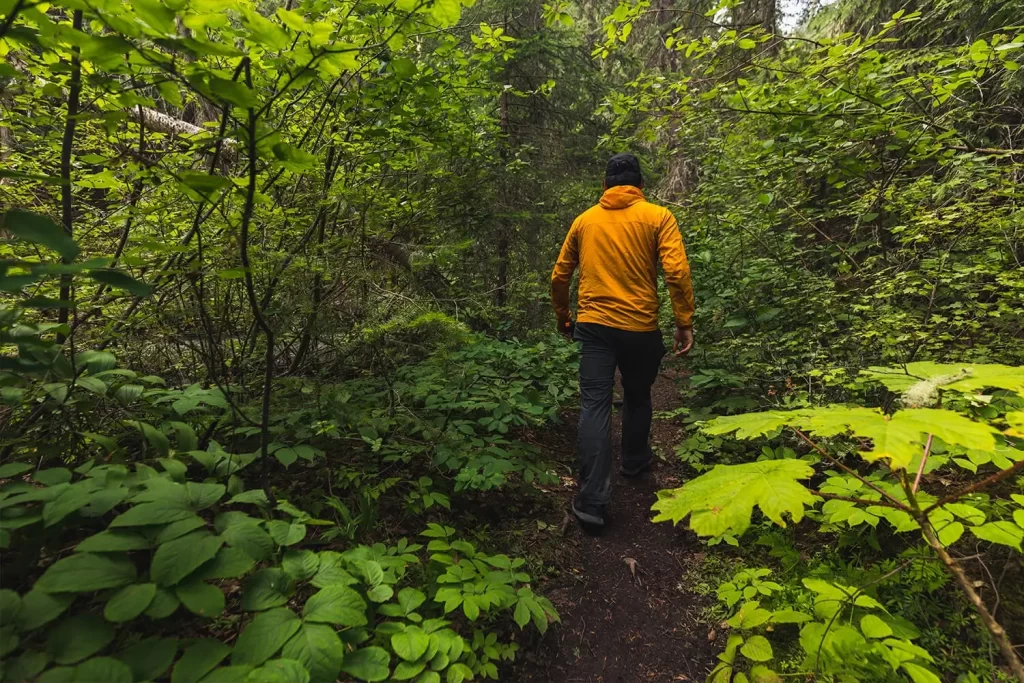
Making my way towards the river.
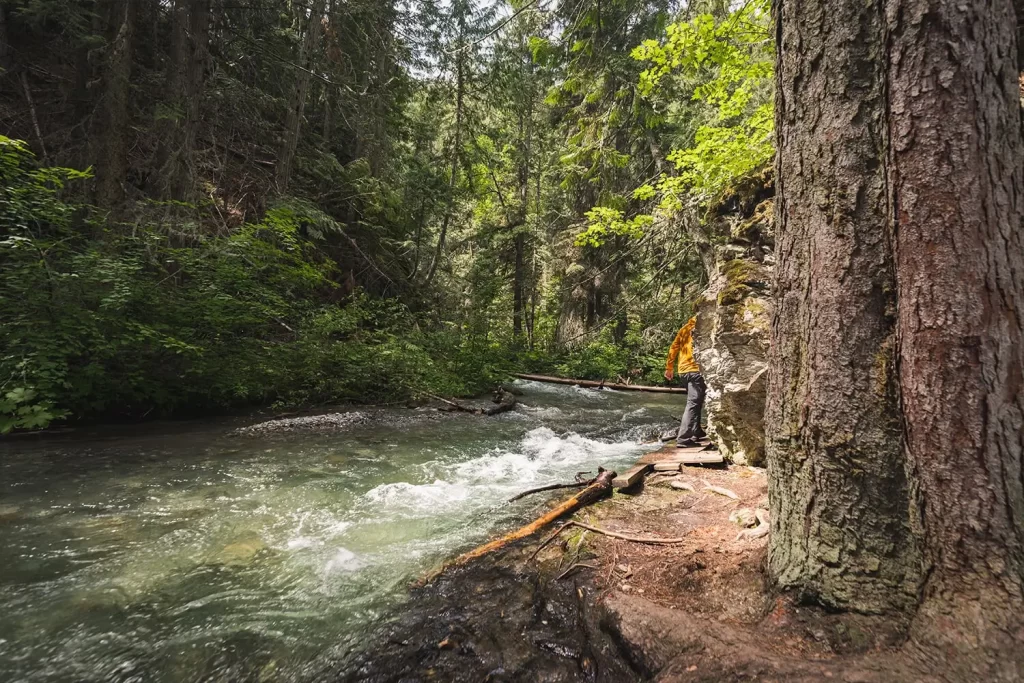
After a small clearing the road turns into a trail continuing straight ahead.
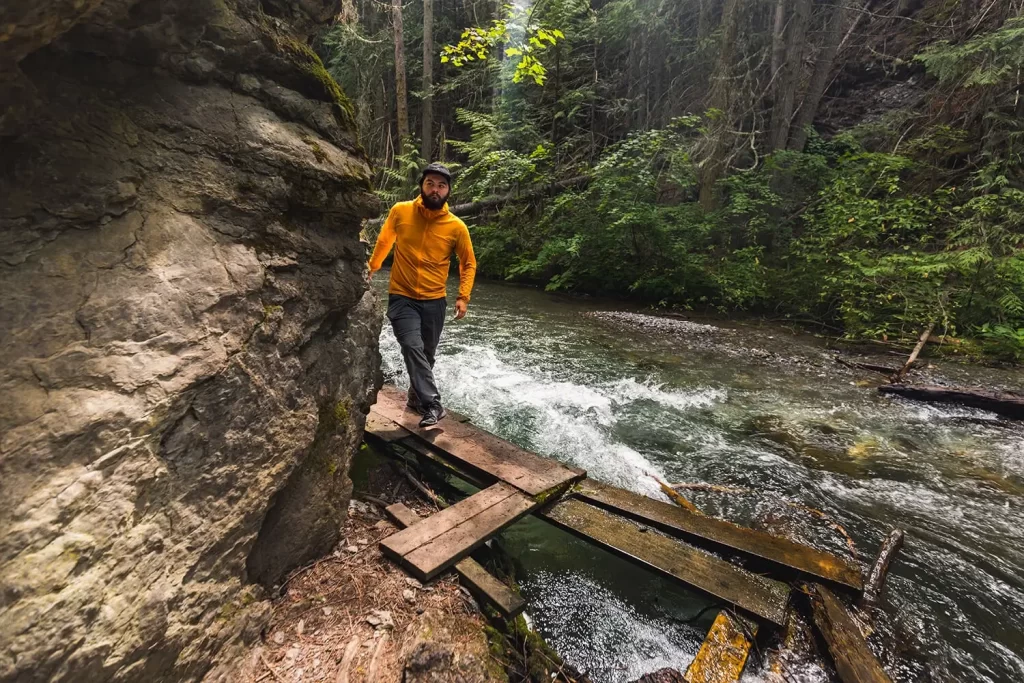
A makeshift wooden platform makes for easy travelling around this right corner.
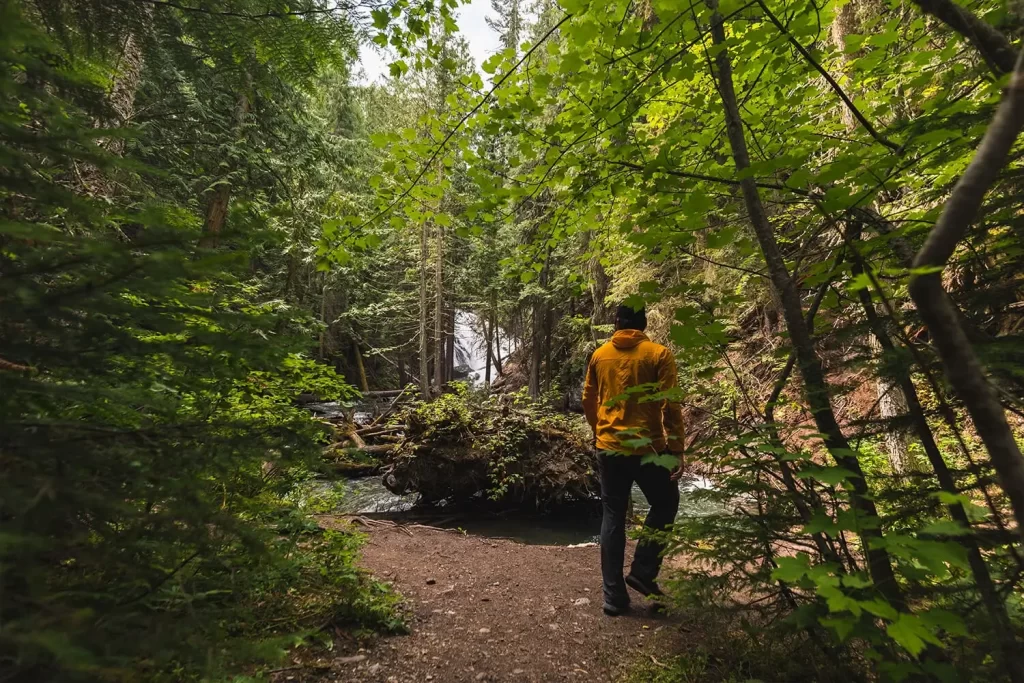
The falls visible now after rounding the corner. One more obstacle remains however.
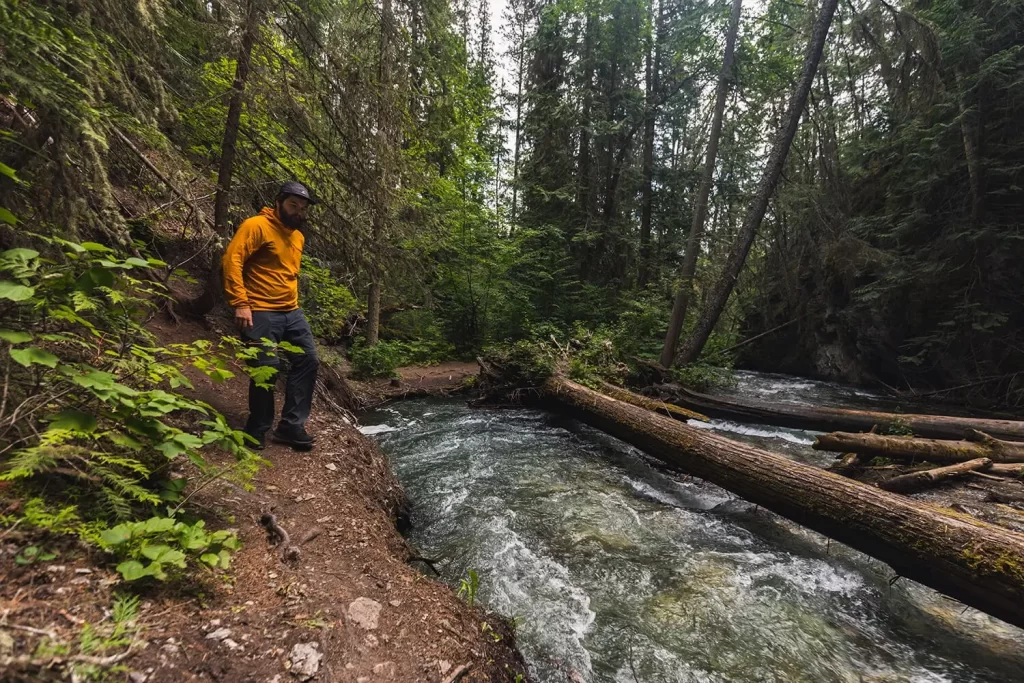
Mountain-goat-ing up and around via the steep bank here. Alternatively I could have crossed via the log at right.
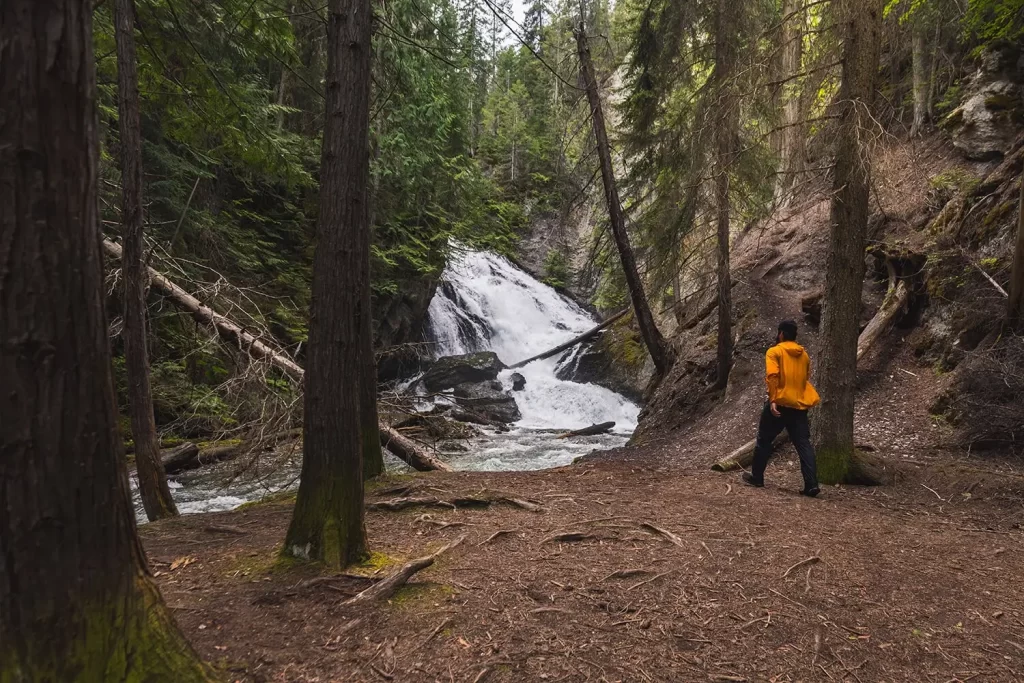
Brisco Falls.
Recommended Hiking Gear



Water is a must whenever I’m hiking, especially if the sun is going to be out. My favourite water filter I’ve used is the Katadyn BeFree 0.6L, which unlike other water filters I’ve used packs up really small and lightweight. For hikes where I know there won’t be any readily available water sources along the way, I make sure to bring my own. The Hydrapak Stow 1L bottle is my go-to, for the same reason that it’s made of a soft plastic that folds up and doesn’t take up any more extra space than necessary in my pack. Finally, Aquatabs are another great option for purifying water, with one tablet being suitable for one litre of water. I previously used the Grayl water filter while travelling internationally, and though I found its hard body more convenient for day to day use and easier to drink from, it has a little too much bulk for my fast-and-light style of hiking.



The secret to all my photos of gorgeous sunset and sunrise mountaintop views? A lot of hiking in the dark. And let me speak from personal experience when I say that the last thing that you want to happen when hiking is to be caught in the dark without a headlamp. I used the Black Diamond Spot 400 for years and it worked great – until I lost it on top of a mountain somewhere. The only downside to it was having to worry about the batteries dying, though there’s also a slightly more expensive version that has a rechargeable battery. Nowadays I’m using the Petzl Actik Core, which is a bit pricier than the more budget-friendly Black Diamond, but is also brighter, more comfortable (in my opinion), and has a hybrid power system that is rechargeable but can also take AAA batteries if needed.
You won’t see me using trekking poles on shorter hikes often – but on long hikes and backpacking trips, as well as certain scrambles, they are an absolute lifesaver. I’ve invested in a high quality ultra-lightweight pair of MSR DynaLock Ascent carbon poles which, while pricey, I don’t regret one bit. If you’re not entirely sure how much use you’re going to get out of a pair of trekking poles, the best budget-friendly option would be the Trekology Trek Z 2.0. Amazon does sell a lot of cheaper Made in China-style trekking poles for cheaper, but these usually are much much heavier and not worth buying.
All the best and most long-lasting cables and power banks I’ve ever owned have been Anker. I once had a phone cable from them that lasted me over three years of daily use! That’s why I keep an Anker PowerCore Essential 20K power bank on me. Like many people I use my phone for a lot of stuff when hiking (checking in with family, using online maps, taking photos, flying my drone) so I like to be prepared for that low battery warning by having a backup power source on me just in case.



The only socks I ever buy for myself are from Darn Tough, and I almost always make sure to wear them when hiking. After years of having no problems only wearing these comfortable and rugged socks for hikes, I accidentally wore a pair of no-name socks on a hike last year and ended up with blisters on both feet. Safe to say I’m back to sticking with the Darn Tough. And the best part? They have a lifetime guarantee, meaning that if they ever wear out you can send them back for a brand new pair. For hiking footwear I go between a pair of lightweight approach shoes for quick and dirty mountain ascents or anything involving scrambling and more heavy-duty boots for longer treks. I’ve worn a couple different versions of the lightweight but super durable Arc’teryx Konseal FL 2 approach shoes for a few years now and am very impressed with the durability. I also really like the thick toecap that keeps me protected every time I stumble into a root or large rock. For longer, tougher, or muddier treks I rely on my LOWA Camino EVO GTX, which I find insanely comfortable and made of very high quality.



I wear my Ar’teryx Gamma Lightweight Pants on every single hike I go on, and on many days when I’m not hiking. After several years of abuse they are still holding together extraordinarily well, with only a few small holes from where I’ve fallen down and some slight stains from being repeatedly coated with mud. They’re lightweight, breathable, and super comfortable. For lightweight and breathable hiking tops I’m a big fan of both the Patagonia Capilene Shirt and the MEC Core Shirt. My Arc’teryx Squamish Hoody shows up in a lot of my photos. It’s super lightweight and packable, and does a great job of cutting the wind while also being pretty breathable. I also have an Arc’teryx Atom Hoody and Arc’teryx Beta LT that I pull out for cooler or wetter conditions.
I hope you enjoyed this guide to Brisco Falls in the Columbia Valley! Feel free to leave any questions in the comment section below or to contact me directly via social media.
